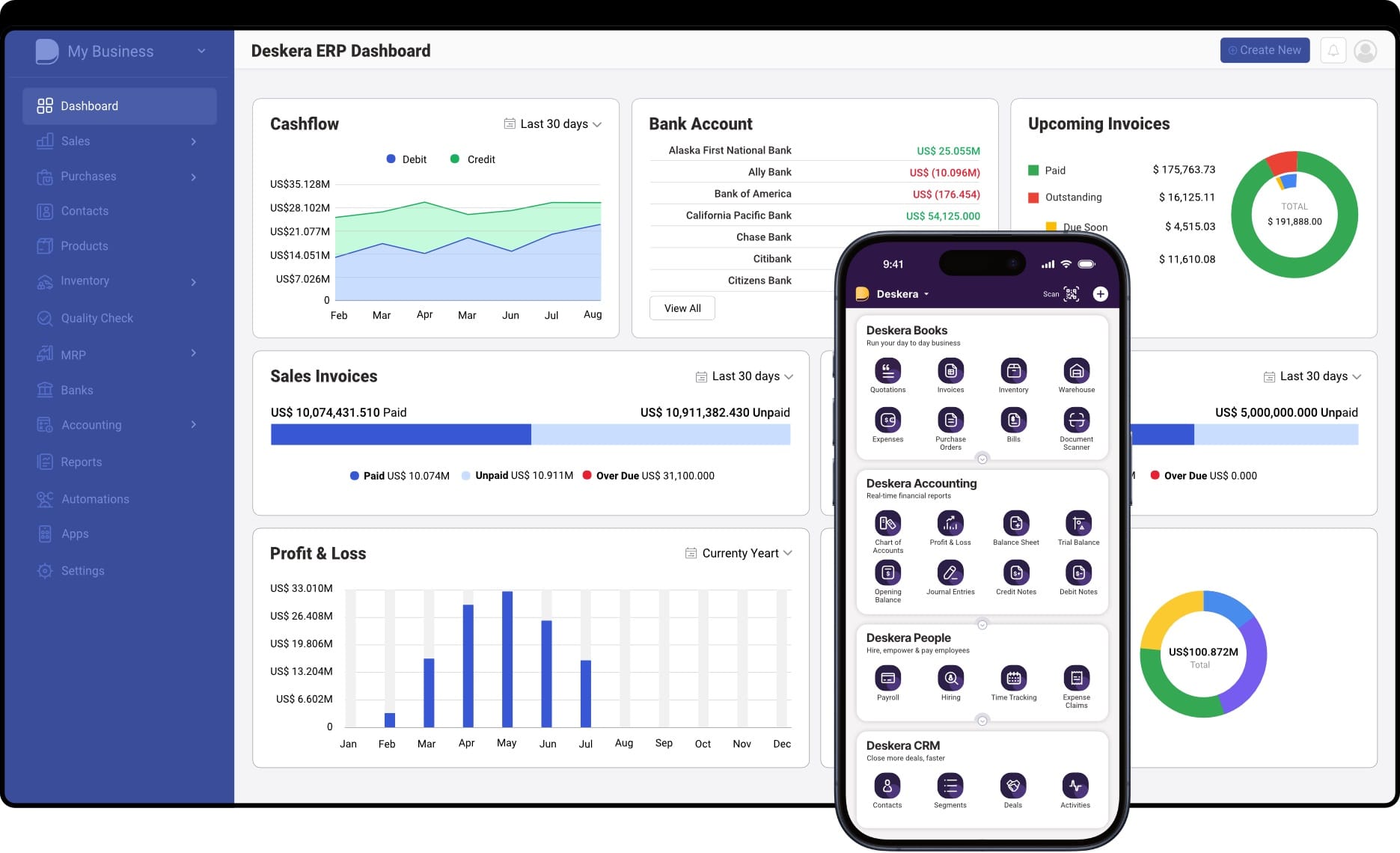What if your website or application could stay online 24/7, scale automatically with demand, and never worry about a single server failure again? That’s the power of cloud hosting—an innovative solution that’s transforming the way businesses operate online. In a world where speed, uptime, and flexibility are critical, cloud hosting offers unmatched reliability by distributing data across multiple servers.
Unlike traditional hosting solutions that rely on a single physical server, cloud hosting harnesses the resources of an entire network of servers working in unison. This approach not only ensures higher availability and performance but also offers the flexibility to scale resources as your business grows. Whether you're managing a dynamic e-commerce site, a SaaS platform, or a resource-heavy web application, cloud hosting gives you the infrastructure to stay agile and efficient.
Many growing businesses are now adopting cloud-based tools and platforms to manage everything from websites to backend operations. For instance, Deskera ERP is a powerful cloud-based enterprise resource planning solution that enables businesses to manage accounting, inventory, sales, and HR from anywhere, at any time. With built-in mobile accessibility, AI-powered features, and advanced reporting tools, Deskera helps streamline operations and supports the scalability cloud infrastructure provides.
In this complete guide, we’ll walk you through everything you need to know about cloud hosting.
What is Cloud Hosting?
Cloud hosting is a web hosting solution that leverages multiple interconnected servers to distribute data, applications, and resources across a network rather than relying on a single physical server. This decentralized approach ensures better flexibility, high availability, and enhanced performance for websites and applications.
In traditional hosting, your website or application is stored on a single server. If that server goes down or experiences heavy traffic, your site may crash or slow down. In contrast, cloud hosting distributes your data across a cluster of servers—often located in different data centers around the world. This setup ensures that if one server fails or becomes overloaded, another one in the network automatically takes over, keeping your site up and running without interruption.
At its core, cloud hosting utilizes virtualization technology to create virtual servers (also known as cloud instances) on top of a physical server infrastructure. These virtual servers pull resources—like processing power, memory, and storage—from a centralized pool, which can be adjusted dynamically based on demand. This is what makes cloud hosting highly scalable and elastic.
For example, if your website suddenly experiences a surge in traffic, cloud hosting can allocate more server resources in real-time to handle the load. Once traffic stabilizes, the resources scale down—so you only pay for what you actually use.
Cloud hosting is ideal for:
- Growing startups needing to scale quickly
- E-commerce sites with unpredictable traffic patterns
- Enterprises managing high-traffic applications
- SaaS providers requiring high uptime
- Bloggers and content creators seeking performance without complexity
Key characteristics of cloud hosting:
- Scalability: Easily scale resources (CPU, RAM, storage) up or down based on demand.
- High Availability: If one server fails, another takes over—minimizing downtime.
- Pay-as-You-Go Pricing: Only pay for the resources you use.
- Global Reach: Host content closer to your users with geographically distributed servers.
- Improved Performance: Load balancing ensures traffic is distributed efficiently across multiple servers.
How Cloud Hosting Works
Cloud hosting is a method of storing and delivering websites, applications, and services through a network of virtual servers instead of relying on a single physical server.
It uses virtualization technology to divide physical servers into multiple virtual machines (VMs), which are then connected to create a powerful and flexible hosting environment.
1. Virtualization of Physical Servers
At the heart of cloud hosting is virtualization. Large-scale data centers contain numerous physical servers.
These servers are partitioned into virtual machines (VMs) using a hypervisor, a software layer that manages resources and allows multiple VMs to run on the same physical hardware.
2. Pooling of Resources
All these VMs share a pool of resources such as:
- CPU power
- RAM
- Storage (SSD/HDD)
- Network bandwidth
Instead of being tied to a single machine, your website or app taps into this shared resource pool, which ensures scalability and redundancy.
3. Load Balancing and Redundancy
Cloud hosting platforms distribute incoming traffic across multiple servers using load balancers. This ensures:
- No single server is overwhelmed
- Optimal performance
- High availability and uptime
If one server goes down, your data and services automatically failover to another—reducing downtime.
4. On-Demand Resource Allocation
With cloud hosting, you can scale your resources up or down in real time, based on demand.
For example, if you run a flash sale on your website and traffic spikes, the cloud can instantly allocate more CPU or memory to handle it—then scale down once the spike ends.
5. Data Storage and Backup
Your files, databases, and other assets are stored across multiple redundant storage systems, often in geographically dispersed data centers.
This not only protects data against loss or failure but also improves access speed by serving content from the nearest server.
6. Managed Through Web-Based Dashboards or APIs
Most cloud providers offer intuitive dashboards or APIs that allow you to:
- Monitor usage and performance
- Add or remove resources
- Set up backups and security rules
- Automate deployments and scaling
This makes cloud hosting highly customizable and user-friendly, even for businesses without large IT teams.
Types of Cloud Hosting
Cloud hosting isn't one-size-fits-all. Depending on business needs, scalability requirements, and security preferences, you can choose from various cloud hosting types. The four primary types are:
1. Public Cloud Hosting
What it is: Public cloud hosting uses a shared infrastructure where multiple users (called tenants) access services and resources via the internet. The hardware, storage, and networking are owned and managed by a third-party cloud service provider.
Key Features:
- Shared but securely partitioned resources
- High scalability and reliability
- Cost-effective due to pay-as-you-go pricing
Best for: Startups, small to medium-sized businesses, or projects with fluctuating workloads
2. Private Cloud Hosting
What it is: Private cloud hosting dedicates a specific set of cloud resources exclusively for one organization. This setup can be hosted on-site (on-premise) or by a third-party provider but offers greater control, security, and customization.
Key Features:
- Enhanced privacy and data protection
- Customizable infrastructure
- Suitable for compliance-heavy industries
Best for: Enterprises with strict regulatory requirements (e.g., finance, healthcare), or businesses needing complete control over infrastructure
3. Hybrid Cloud Hosting
What it is: Hybrid cloud hosting combines both public and private cloud environments, allowing data and applications to be shared between them. This approach gives businesses the flexibility to keep sensitive operations in a private cloud while leveraging the scalability of the public cloud.
Key Features:
- Optimized workload management
- Balance between security and flexibility
- Seamless integration between environments
Best for: Organizations with dynamic workloads, needing both control and scalability
4. Managed Cloud Hosting
What it is: Managed cloud hosting involves outsourcing the setup, maintenance, monitoring, and support of your cloud infrastructure to a third-party service provider. The provider takes care of everything from updates to security, while you focus on your core business.
Key Features:
- Full technical support and maintenance
- Automated backups, monitoring, and updates
- Less need for in-house IT resources
Best for: Businesses without a dedicated IT team, or those wanting to reduce operational overhead
Web Hosting vs. Cloud Hosting
1. Definition
- Web Hosting Web hosting is a service that stores your website's files on a single physical server. When users type in your domain name, the server delivers your website to their browser. It includes shared hosting, VPS, and dedicated hosting.
- Cloud Hosting Cloud hosting uses a network of interconnected virtual servers (in the cloud) to host websites or applications. Resources are pooled from multiple machines, and your data is stored redundantly across several servers.
2. Key Differences
3. Pros and Cons
Web Hosting Pros:
- Budget-friendly
- Simple setup
- Great for low-traffic websites
Web Hosting Cons:
- Downtime risk if server fails
- Resource limits may impact performance
Cloud Hosting Pros:
- Better uptime and speed
- Instant scalability
- Resilient infrastructure
Cloud Hosting Cons:
- Can be more expensive
- May require technical skills
4. Which Should You Choose?
- Choose Web Hosting if:
- You're launching a small website or blog
- You have a tight budget
- Your traffic is low and predictable
- Choose Cloud Hosting if:
- You expect high or fluctuating traffic
- You run a business-critical website or application
- You need superior performance and uptime
VPS Hosting vs. Cloud Hosting
1. What is VPS Hosting?
VPS (Virtual Private Server) hosting uses virtualization to divide a single physical server into multiple isolated virtual environments. Each VPS acts like a dedicated server with its own operating system, resources, and root access—but it still shares the physical hardware with other VPS accounts.
2. What is Cloud Hosting?
Cloud hosting pulls resources from a network of multiple physical and virtual servers (the "cloud"). Your website or application is hosted across this distributed network, ensuring high availability, scalability, and redundancy.
3. Key Differences Between VPS and Cloud Hosting
4. Pros and Cons
VPS Hosting Pros
- More affordable than cloud for fixed needs
- Dedicated environment and resources
- Ideal for developers needing control
VPS Hosting Cons
- Scalability is limited
- Single point of failure
- Not ideal for unpredictable traffic
Cloud Hosting Pros
- Extremely reliable with zero downtime setups
- Instantly scalable resources
- Better suited for mission-critical sites
Cloud Hosting Cons
- Can be costlier for low-resource sites
- Might require more technical know-how (unless managed)
5. Which One Should You Choose?
- Choose VPS Hosting if:
- You need more control and performance than shared hosting
- Your traffic is predictable
- You’re running multiple smaller sites or apps on a budget
- Choose Cloud Hosting if:
- You expect variable or high traffic
- Your site or app can’t afford downtime
- You want flexibility and future-proof scalability
Dedicated Hosting vs. Cloud Hosting
1. What is Dedicated Hosting?
Dedicated hosting means your website or application runs on a physical server that is completely dedicated to you—no sharing of resources. You get full control over the hardware, software, and security configurations.
Think of it as owning a private building—only your business operates inside, and you can customize it however you want.
2. What is Cloud Hosting?
Cloud hosting uses a network of virtual servers running on physical infrastructure. Your website/app uses resources from multiple servers across the cloud, offering flexibility, redundancy, and high availability.
Think of it as working in a high-tech co-working space—resources are shared intelligently, and you only pay for what you use.
3. Key Differences
4. Pros and Cons
Dedicated Hosting Pros
- Full control over configurations
- Consistent high performance
- Strong security with physical isolation
Dedicated Hosting Cons
- High cost (hardware & maintenance)
- Scalability is time-consuming and manual
- Downtime risk if the server fails
Cloud Hosting Pros
- Cost-efficient and scalable
- High uptime and availability
- Load balancing and redundancy built-in
Cloud Hosting Cons
- Less direct hardware control
- Potentially higher costs at scale (usage-based)
- Complex setups if not managed
5. When to Choose What?
- Choose Dedicated Hosting if:
- You need full control over server configurations
- You run resource-heavy apps that demand high performance 24/7
- Your organization has strict compliance/security needs
- Choose Cloud Hosting if:
- You expect fluctuating traffic or rapid growth
- You want to reduce downtime risks
- You prefer flexible, pay-as-you-grow pricing
Shared Hosting vs. Cloud Hosting
1. What is Shared Hosting?
Shared hosting is a type of web hosting where multiple websites share the same physical server and its resources—like CPU, RAM, and disk space. It’s the most affordable and beginner-friendly hosting option.
Imagine living in an apartment building where multiple tenants share the same water, electricity, and Wi-Fi.
2. What is Cloud Hosting?
Cloud hosting stores your website on a network of interconnected virtual servers that draw resources from multiple physical machines. If one server fails, another steps in, ensuring high uptime and performance.
Think of it as living in a high-tech smart city where services scale based on demand, and backup systems are always ready.
3. Key Differences
4. Pros and Cons
Shared Hosting Pros
- Cheapest hosting option
- Easy to set up and manage
- Ideal for small websites and beginners
Shared Hosting Cons
- Shared resources can impact speed and uptime
- Limited customization
- Less secure and less scalable
Cloud Hosting Pros
- Fast, flexible, and scalable
- Excellent uptime and load handling
- Better resource isolation and security
Cloud Hosting Cons
- Can be more expensive over time
- Slightly higher learning curve
5. Which Should You Choose?
- Choose Shared Hosting if:
- You’re launching a small personal or business website
- Budget is your main concern
- You don’t expect high traffic
- Choose Cloud Hosting if:
- You expect website traffic to grow or spike
- Your website must stay online 24/7
- You need more control and flexibility
Benefits of Cloud Hosting
Cloud hosting is no longer just an alternative to traditional hosting—it's the go-to solution for modern businesses seeking speed, scalability, reliability, and cost-efficiency.
Whether you're running a startup, a growing eCommerce site, or an enterprise application, cloud hosting offers a host of benefits that traditional models struggle to match.
Below are the key advantages, explained in depth:
1. High Scalability and Flexibility
One of the standout features of cloud hosting is its on-demand scalability. You can easily scale your computing resources—CPU, RAM, bandwidth, or storage—up or down based on your needs.
- Handle traffic spikes without downtime
- Scale resources automatically with autoscaling features
- Launch new applications or features without infrastructure delays
Ideal for businesses with fluctuating traffic or evolving workloads
2. Improved Website Performance and Speed
Cloud hosting typically uses Content Delivery Networks (CDNs) and load balancing to distribute traffic across multiple servers. This leads to:
- Faster load times
- Reduced latency
- Enhanced user experience
Result: Websites and apps run smoother, keeping users engaged and reducing bounce rates.
3. High Availability and Uptime
In cloud hosting, your website or application is hosted across a cluster of servers. If one server fails, another instantly takes over.
- Automatic failover mechanisms
- Built-in redundancy and backups
- Uptime guarantees (often 99.9% or higher)
Your digital presence remains live—even in the event of hardware failure.
4. Enhanced Security
Cloud hosting providers implement enterprise-grade security protocols, including:
- End-to-end data encryption (in transit and at rest)
- Firewalls and DDoS protection
- Regular security updates and patches
- Role-based access controls and monitoring
Your data is well-protected—even more so than in many on-premise environments.
5. Cost-Efficiency and Pay-as-You-Go Pricing
With cloud hosting, you only pay for the resources you actually use, unlike traditional hosting where you're often stuck paying for fixed server space.
- No upfront hardware investment
- Lower maintenance and operational costs
- Monthly, hourly, or usage-based billing models
Perfect for startups and businesses aiming to optimize IT budgets.
6. Easy Maintenance and Automated Updates
Cloud hosting takes the stress out of server maintenance. Providers handle:
- OS updates and patching
- Server monitoring
- Hardware maintenance and replacements
- Performance optimization
You focus on your business, while the cloud takes care of the backend.
7. Global Reach and Accessibility
Because cloud servers are distributed across data centers worldwide, your content can be served from a location closest to the user, improving access speed.
- Global CDN support
- Reduced geographical latency
- 24/7 access from anywhere via web or mobile
Supports remote teams and international operations seamlessly.
8. Seamless Integration with Other Cloud Services
Cloud hosting easily integrates with:
- Cloud storage
- Databases
- SaaS applications and APIs
- ERP systems like Deskera, CRM platforms, and analytics tools
Build an interconnected digital ecosystem with minimal setup time.
9. Eco-Friendly and Sustainable
Leading cloud hosting providers are investing in green data centers, renewable energy, and carbon offset programs.
- Energy-efficient infrastructure
- Virtualization reduces physical hardware waste
- Shared resources lower overall environmental impact
Contribute to sustainability goals while powering your business efficiently.
10. Better Disaster Recovery and Backup Solutions
With cloud hosting, your data is automatically backed up and stored in geographically diverse locations. In case of a disaster:
- Rapid data recovery is possible
- No data loss from server failure or cyberattacks
- Minimal downtime and business disruption
Gives peace of mind with robust business continuity planning.
Challenges and Limitations of Cloud Hosting
While cloud hosting offers numerous advantages such as scalability, cost efficiency, and high availability, it’s not without its challenges. Like any technology, it comes with trade-offs that businesses must understand and plan for.
Here are the key limitations and potential risks associated with cloud hosting—explained in detail:
1. Security and Data Privacy Concerns
Even though cloud providers offer advanced security features, sensitive data stored off-premises may still raise compliance and control concerns.
- Data breaches can occur if access controls are poorly configured.
- Multi-tenant environments increase the risk of unauthorized access.
- Compliance with regulations like GDPR, HIPAA, or CCPA can be complex in the cloud.
Mitigation: Choose providers with end-to-end encryption, compliance certifications, and robust access control features.
2. Downtime and Service Outages
Despite high uptime guarantees, cloud service outages do happen—and when they do, they can impact businesses globally.
- Downtime affects website accessibility, transactions, and customer trust.
- Dependency on a third-party infrastructure means less control during outages.
Mitigation: Use multi-cloud strategies or hybrid models to reduce dependency on a single provider.
3. Unpredictable or Hidden Costs
While cloud hosting offers a pay-as-you-go model, costs can spiral unexpectedly if usage isn’t monitored carefully.
- High traffic, storage overages, or bandwidth spikes can inflate monthly bills.
- Some features (e.g., backups, IPs, security tools) may cost extra.
- Misconfigured resources often lead to resource wastage and overspending.
Mitigation: Use cloud cost monitoring tools and budget alerts to control expenses.
4. Limited Customization
Cloud environments are designed for standardization and efficiency, which may restrict customization options.
- You may not have access to root-level configurations.
- Custom hardware or niche software configurations may not be supported.
- Vendor lock-in may limit the ability to tweak environments or switch providers easily.
Mitigation: Choose providers offering configurable environments or use a hybrid setup for specialized needs.
5. Vendor Lock-In
Once you build your infrastructure and workflows around a specific cloud platform, switching providers can be difficult and costly.
- Migration involves data transfer, system redesign, and potential downtime.
- Proprietary services and APIs may not work on other platforms.
- Licensing models may differ significantly between providers.
Mitigation: Opt for open standards and multi-cloud architectures when possible.
6. Dependence on Internet Connectivity
Cloud hosting requires reliable internet access to function. Without it:
- You can’t access admin panels, data, or apps.
- Remote teams face operational interruptions.
- Even short outages or latency issues can hurt productivity.
Mitigation: Invest in backup internet connections and redundant connectivity options.
7. Learning Curve and Technical Complexity
Migrating to cloud hosting and managing cloud infrastructure requires technical expertise that not all teams have.
- Understanding cloud architecture, billing, and resource management can be overwhelming.
- Admin panels vary across providers, requiring training or consultation.
- Errors in setup can cause security vulnerabilities or downtime.
Mitigation: Use managed cloud hosting services or partner with certified cloud experts.
8. Limited Support for Legacy Systems
Not all legacy applications are cloud-ready. Some may:
- Fail to function in virtualized or containerized environments.
- Require significant modification or refactoring before cloud migration.
- Depend on outdated protocols or hardware configurations.
Mitigation: Assess cloud readiness and conduct application modernization before migrating.
9. Data Transfer and Migration Issues
Moving large volumes of data to the cloud is often time-consuming and technically complex.
- Large data transfers can take hours or days.
- Improper migration may lead to data loss or corruption.
- Downtime during migration can affect business continuity.
Mitigation: Plan a phased migration with backup strategies and professional support.
How to Choose the Right Cloud Hosting Provider
Selecting the right cloud hosting provider is crucial for ensuring performance, security, scalability, and long-term business success. Here's a step-by-step guide to help you make the best choice:
1. Assess Your Business Needs
Before comparing providers, identify your specific hosting requirements:
- Traffic volume & expected growth
- Type of website or application (e.g., eCommerce, SaaS, blog)
- Budget constraints
- Performance expectations (speed, uptime, global access)
- Compliance or security needs
Understanding your goals will help narrow down providers that align with your priorities.
2. Evaluate Performance and Uptime Guarantees
Look for providers that offer:
- Uptime SLA of at least 99.9%
- Fast content delivery through global data centers or CDNs
- Scalable resources (RAM, CPU, storage)
Speed and availability are critical to user satisfaction and SEO.
3. Review Security Measures
Your provider should offer robust security features such as:
- End-to-end data encryption
- Firewall protection and DDoS mitigation
- Regular backups
- Compliance certifications (e.g., ISO 27001, SOC 2, GDPR, HIPAA)
Security isn’t optional—ensure your provider meets industry standards.
4. Check for Scalability and Flexibility
Choose a provider that allows you to:
- Upgrade or downgrade resources easily
- Deploy across multiple regions
- Support containerized applications or serverless setups if needed
Scalability ensures your hosting grows with your business.
5. Understand the Pricing Structure
Compare pricing models:
- Fixed vs. pay-as-you-go
- Cost of bandwidth, storage, and additional services
- Hidden fees or overage charges
Go for transparent, predictable pricing that matches your usage patterns.
6. Evaluate Customer Support
Look for providers that offer:
- 24/7 support via live chat, phone, or tickets
- Fast response times and knowledgeable agents
- Access to support documentation and user communities
Reliable support can save you hours during technical issues.
7. Look at Integration & Compatibility
Make sure the platform supports:
- Your tech stack (Linux/Windows, PHP, Node.js, MySQL, etc.)
- Easy integration with tools like CI/CD pipelines, third-party apps, or analytics
- APIs and control panels (like cPanel or custom dashboards)
Compatibility ensures smoother deployment and maintenance.
8. Read Reviews and Case Studies
Check:
- User testimonials
- Independent reviews on platforms like G2, Trustpilot, or Reddit
- Real-world case studies from businesses similar to yours
Social proof can reveal strengths and weaknesses you might miss otherwise.
9. Test with a Free Trial or Money-Back Guarantee
Most top providers offer:
- Free trial periods
- 30-day money-back guarantees
Take advantage of these to test performance, ease of use, and support.
Future Trends in Cloud Hosting
As technology evolves, cloud hosting continues to transform rapidly. Businesses are shifting from traditional setups to more intelligent, automated, and secure cloud environments. Below are the key trends shaping the future of cloud hosting:
1. Edge Computing Integration
With the rise of IoT and real-time applications, edge computing is becoming crucial. It brings data processing closer to the user to reduce latency.
Trend: Expect cloud hosting platforms to integrate edge servers that enhance speed, especially for gaming, streaming, and smart devices.
2. AI-Powered Infrastructure
Artificial Intelligence (AI) is being used to optimize cloud environments through:
- Automated resource allocation
- Predictive scaling
- Smart monitoring and issue detection
Trend: AI will drive self-healing, self-optimizing cloud environments—reducing manual effort and boosting uptime.
3. Rise of Multi-Cloud and Hybrid Deployments
Businesses no longer want to be locked into a single cloud vendor. Instead, they are adopting multi-cloud (using services from multiple providers) and hybrid cloud (mixing on-premise with cloud).
Trend: Cloud hosting providers will increasingly support cross-platform orchestration and data portability.
4. Enhanced Focus on Sustainability
As cloud adoption grows, so does its environmental impact. Providers are making major investments in green data centers and energy-efficient technologies.
Trend: Expect more eco-friendly cloud hosting solutions and carbon-neutral operations as sustainability becomes a core priority.
5. Serverless Architecture Expansion
Serverless computing allows developers to run code without managing servers.
Trend: More businesses will embrace serverless models for agility, scalability, and cost-efficiency—especially for microservices.
6. Tighter Security with Zero Trust and Confidential Computing
With growing cyber threats, security models are shifting to:
- Zero Trust Architecture (never trust, always verify)
- Confidential computing that encrypts data even during processing
Trend: Expect cloud hosting to offer built-in, end-to-end encrypted environments with enhanced identity and access controls.
7. Growth of Cloud-Native Applications
Modern applications are being developed directly in the cloud using containers, microservices, and Kubernetes.
Trend: The demand for cloud-native hosting environments will skyrocket, supporting faster, more scalable development cycles.
8. 5G-Enabled Cloud Experiences
With global 5G rollout, cloud platforms can deliver ultra-fast mobile access and better real-time collaboration.
Trend: 5G will unlock low-latency, high-speed cloud services across mobile and edge environments.
9. Industry-Specific Cloud Solutions
Cloud providers are beginning to tailor services for specific sectors like healthcare, finance, manufacturing, and education.
Trend: Expect to see verticalized cloud offerings with compliance, tools, and performance tailored to industry use cases.
10. Automation & DevOps Synergy
The combination of DevOps practices with cloud hosting is leading to:
- Continuous deployment (CI/CD)
- Infrastructure as Code (IaC)
- Autonomous scaling and testing
Trend: Automation will be the backbone of cloud operations (CloudOps), helping businesses innovate faster with fewer resources.
How Can Deskera ERP Enhance Your Cloud Hosting Strategy?
As businesses increasingly adopt cloud hosting to power their websites, applications, and digital services, the need for an integrated ERP system becomes critical. That’s where Deskera ERP stands out. It’s a cloud-based enterprise resource planning solution that helps businesses unify and automate their core operations—all in one platform.
Here’s how Deskera ERP can support and complement your cloud hosting efforts:

1. Seamless Cloud Integration
Deskera ERP is natively built for the cloud, which means it runs smoothly on top of cloud-hosted infrastructure. Whether you're using AWS, Azure, or a private cloud, Deskera offers:
- 24/7 accessibility via the web or mobile
- Real-time data syncing and backups
- Zero dependency on physical servers
Result: You enjoy the scalability and resilience of cloud hosting while managing business operations efficiently.
2. Centralized Business Management
Cloud hosting ensures your apps stay live—Deskera ERP ensures your entire business stays aligned. It offers:
- Accounting and invoicing
- Inventory management
- CRM and sales tracking
- HR and payroll
Result: You don’t just host your applications—you run your entire business ecosystem from the cloud.
3. Built-In Security & Data Compliance
Cloud hosting requires a secure data environment, and Deskera complements this with:
- Role-based access control
- Audit trails
- Encryption and compliance with GDPR & industry standards
Result: You maintain secure, compliant operations, especially important for regulated industries or remote teams.
4. Automation and Custom Workflows
Deskera’s cloud-based ERP lets you automate repetitive processes—from inventory updates to payroll and invoicing—minimizing human error and improving efficiency.
Result: Fewer manual tasks mean you can focus more on innovation and scaling your hosted services.
5. Mobile Accessibility for Remote Teams
Just like cloud hosting removes the need for fixed infrastructure, Deskera supports work-from-anywhere operations via its mobile app and responsive dashboard.
Result: Your team stays productive, whether managing orders, finances, or customers—right from their phones.
6. Scalable for Growing Businesses
If your cloud-hosted service or eCommerce site starts gaining traction, Deskera ERP scales with you—no need to re-platform or reinvest in separate systems.
Result: Effortless growth without operational bottlenecks.
Key Takeaways
- Cloud hosting uses a network of virtual servers to store and manage data, ensuring high availability, flexibility, and performance compared to traditional hosting methods.
- Cloud hosting works by virtualizing physical servers into a pool of shared resources, allowing for on-demand allocation, redundancy, and seamless scalability.
- Cloud hosting comes in various forms—public, private, hybrid, and multi-cloud—each offering different levels of control, customization, and scalability based on business needs.
- Unlike traditional web hosting that relies on a single server, cloud hosting distributes resources across multiple servers, delivering better uptime, performance, and scalability.
- VPS provides isolated server environments on a single physical machine, while cloud hosting offers dynamic scalability and high availability across a distributed network.
- Dedicated hosting gives you full control over a single server, whereas cloud hosting offers better resource optimization, flexibility, and cost efficiency via virtualization.
- Shared hosting is budget-friendly but limited in performance; cloud hosting is more robust, scalable, and secure, ideal for growing businesses and high-traffic websites.
- Cloud hosting enables businesses to scale resources effortlessly, maintain high uptime, access enterprise-grade security, and reduce infrastructure costs.
- While powerful, cloud hosting can pose risks such as vendor lock-in, complex pricing, and data privacy concerns, requiring thoughtful planning and management.
- When selecting a cloud hosting provider, evaluate factors like performance, scalability, security, compliance, pricing, and support to ensure alignment with your business goals.
- Cloud hosting is evolving rapidly with trends like edge computing, AI-driven optimization, and green data centers shaping the future of digital infrastructure.
- Deskera ERP is cloud-native, offering businesses a scalable, secure, and mobile-accessible platform for managing accounting, inventory, HR, and more—without any local infrastructure.
Related Articles












